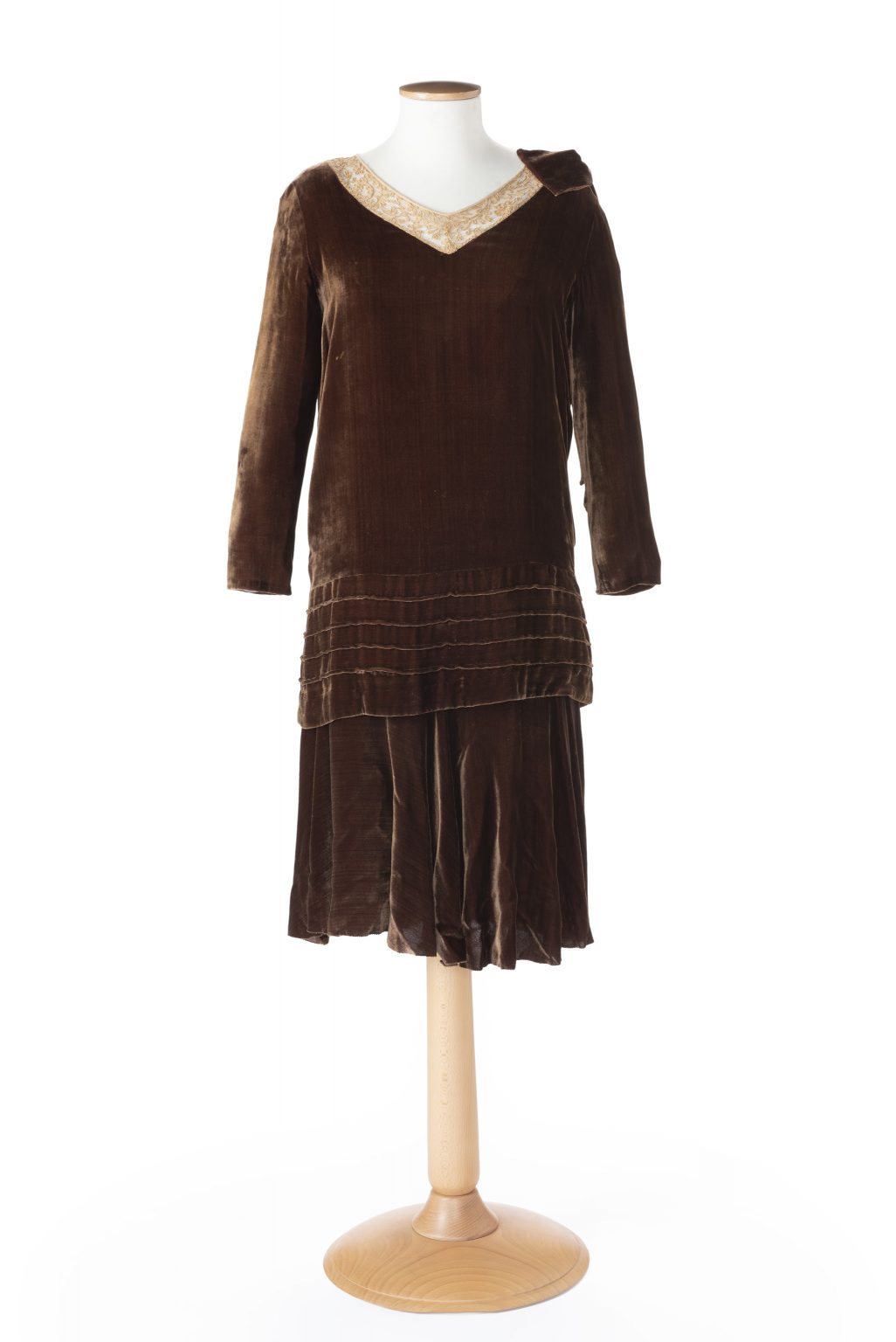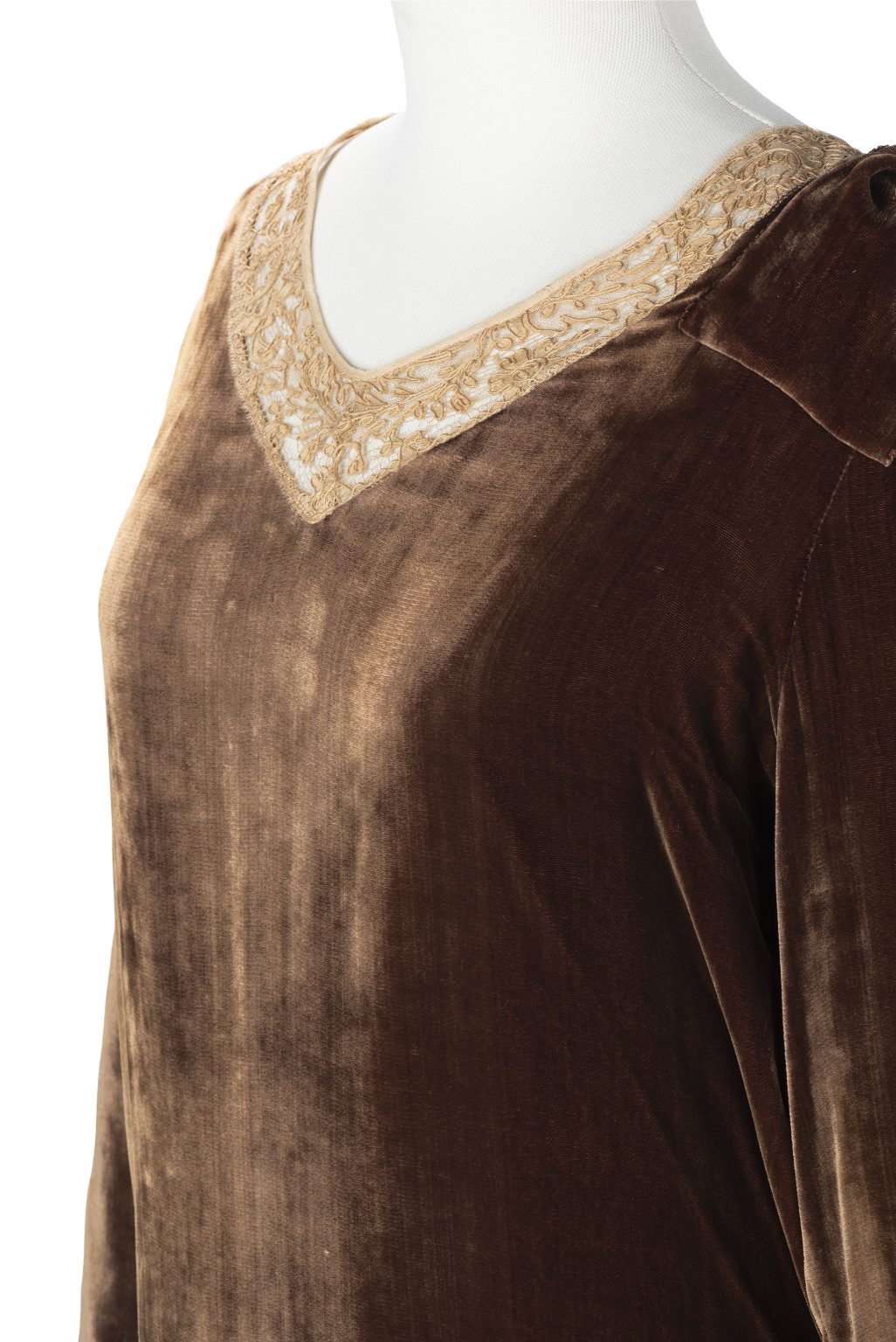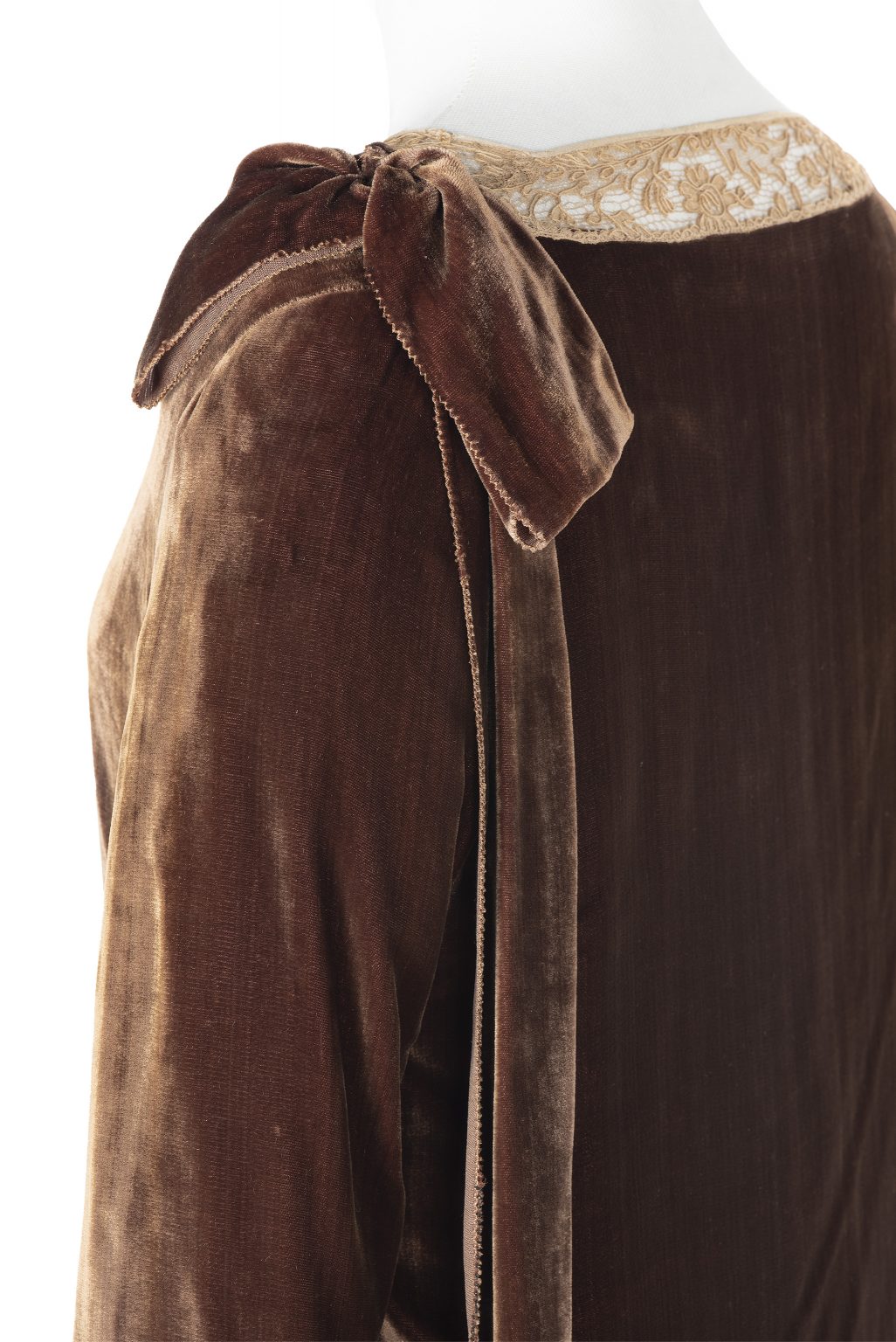
Suit 1925-29 ca.
Two-piece ensemble in brown silk velvet and mechanical lace consisting of a long-sleeved tunic over a sleeveless dress, c. 1925-29, Camilla Colombo Collection.
Details



Historical context
The nineteen twenties was a brief period of peace and transition between two world wars. Although it was a time of economic crisis and political and social instability, there was an overwhelming enthusiasm for the end of the war, particularly among the young who had developed a sense of independence and had less respect for hierarchies and traditions. Clubs filled up with young people dancing the Charleston, a dance that epitomizes the energy and vitality of the Jazz Age. The Flappers, young fashionable girls, drove cars, went to nightclubs alone and acted in a way that was previously considered before were associated with the male world, such as drinking and smoking in public.
Radio and film were both influential in this period and the popularity of the cinema grew further with the advent of sound in 1927.
The café societies of Paris and Berlin were fervent hotbeds of intellectual and artistic discussion and movements such as Dadaism, Surrealism and Expressionism experimented with new modes of research and psychological introspection. In Germany, the Bauhaus aimed to unify function with the aesthetic aspect of objects, and the 1925 Exposition Internationale des Arts Décoratif et Industriels Modernes in Paris showcased the fashionable Art Deco style.
Fashion
When it comes to fashion, the 1920s was perhaps the most revolutionary decade of the 20th century. The idea of dress as we conceive it today was born in this period: modern, functional, easy to wear with no restriction of movement. Women got rid of their corsets and excess layers, cut their hair, and gradually shortened their skirts to just below the knee. The new fashion
was for straight, low-waisted tunics, with no fastenings, in soft fabrics that draped the body without emphasising its forms. Curves were out of fashion for both clothes and the body: decorations were geometric, following the dictates of the Art Deco style and an androgynous physique was sought after. This was the era of Flappers and the Charleston when women went out to dance the night away, and the clothes reflected this trend with beaded fringes that swayed to the rhythm of the music, and shoes held firmly in place by elaborate straps. Women now smoked and wore make-up ostentatiously and new elegant accessories, which included long cigarette holders and handbags specially designed to keep lipstick and face powder at hand, were invented.